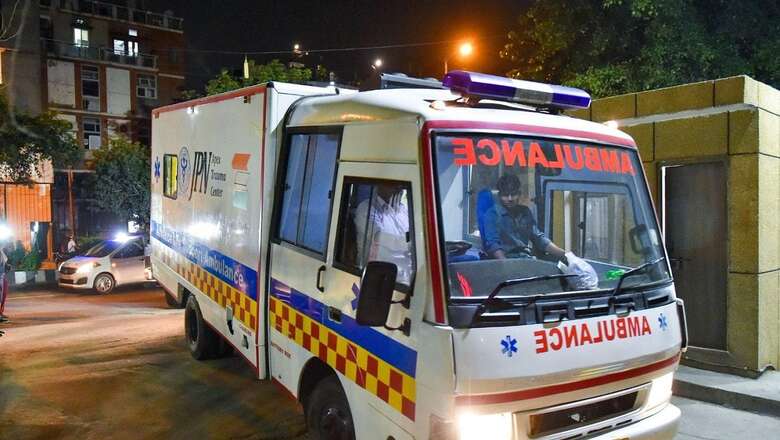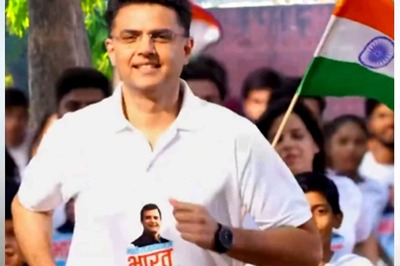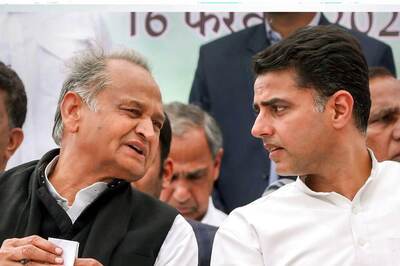
views
I reside in Pune but my work as an infrastructure consultant forces me to travel twice a week to Mumbai using the Pune-Mumbai expressway. Knowing the unsafe nature of the expressway, I always travel in the daytime, though the travel time to Vashi, my place of work, is four hours, I start six hours in advance, and travel always by Ola XL, probably the safest cab at least in my eyes that I can afford, instruct the driver to drive much below the maximum permissible speed in lane three of four-lane expressway.
Lane Discipline is for Idiots and Deadwood
Throughout the travel from Pune to Mumbai or vice versa, sitting in the back seat, I keep my seat belt fastened and keep praying to god. The expressway traffic is so chaotic, the heavy-duty multi-axle trucks and trailers instead of taking the slowest first lane reserved for them invariably travel in the fourth lane reserved for fastest moving vehicles. My driver is in the second lane, and from the left-hand side of our cab, vehicles zoom past at more than 100 kmph, often not permitted 150 kmph.
So much for the lane discipline on one of the busiest Expressways.
The Killer Expressway
An accident a day on the Mumbai-Pune Expressway is normal. For the uninitiated, this Expressway is a death trap that reported 198, 200, 161 and 353 accidents in the years 2022, 2021, 2020 and 2019 respectively. If we add the not reported accidents, the number of accidents on the 120 km expressway is more than 1 per day.
The deaths reported in the above accidents were 92, 88, 66 and 92 in the year 2022, 2021, 2020 and 2019 respectively. Hundreds of others lose their limbs every year in expressway accidents, a number that is not properly recorded, reported or analysed.
India: The Accident Capital of the World
On October 31, 2023, I was travelling to Pune on the Mumbai-Pune Expressway from Navi Mumbai when a notification titled ‘Road accidents in India 2022’ by the Ministry of Road Transport and Highways (MoRTH) popped up on my mobile. As I got immersed in reading the unfortunate report, it sent shivers down my spine.
“In 2022, road accidents and casualties surpassed that of the pre-Covid-19 era. The country recorded a total of 4,61,312 accidents in the year, out of which more than 56 per cent happened on highways and expressways, 1,51,997 (32.9 per cent) on National Highways including Expressways and 1,06,682 (23.1 per cent) on State Highways. The remainder 2,02,633 (43.9 per cent) accidents happened on other roads.”
Pathetic to Say the Least
A total of 4,61,312 road accidents in 2022 claimed 1,68,491 lives, while 4,43,366 got injured. Looking at the gory statistics is pathetic, to say the least. 11.9 per cent year-on-year alarming rise in accidents, 9.4 per cent increase in fatalities and 15.3 per cent surge in those injured in 2022 against the previous year.
To sum up the sad story, two-wheelers accounted for 45 per cent of total fatalities, the next worst sufferers being the pedestrians. Humungous 67 per cent of victims were in the most productive group 18 and 45. And what a travesty of accidents causes, all avoidable – speeding, wrong-side driving, not wearing helmets and poor road infrastructure including the potholed roads.
The Most Bizarre Accident
It was around 3 PM on October 31. The descent of my cab in the Lonavala ghat had commenced, when I saw an unusual scene. The road to my left corner was burning, spitting live fire like in a dormant volcano. I asked my driver to slow down, and my eyes wandered to a vehicle that had gone both turtle and reduced to ashes despite a fire tender standing by the side. Next, I found a stretcher with four people surrounding it but I could not find a patient. Suddenly it struck me that the vehicle reduced to ashes was an ambulance. I reached Pune and forgot about the accident till November 1 in the Times of India, I found a small snippet in the left-hand corner of the front page with the main story on page 13. The title of the story was “Woman dies inside ambulance after oxygen supply cut off in blast”. Then I realised it was the story of the bizarre accident I saw on the expressway.
As the story goes, an Airoli woman Nilabai Kavaldar aged 74 on ventilator support died inside the ambulance after her oxygen supply was cut off due to a blast in the cylinder. It is reported that a short circuit in the engine of the ambulance followed by two successive blasts in the vehicle caused the inferno that decimated both the ambulance and the patient. The other six persons miraculously escaped unhurt.
This fatal story made my three-pound defective and restless manic-depressive mind ask the existential question – How safe are our ambulances? How safe is life on these four wheels life savers and life givers?
Right to Live
I begin with the assertion that few events are more distressing than an unexpected loss of life or permanent disability caused by accidental injury or serious illness where the patients are unable to reach hospitals in emergency for lack of ambulance or die en route due to ill-equipped ambulance.
Particularly tragic are the injured or seriously, potentially salvageable patients who die needlessly through delay in retrieval, inadequate assessment or timely provision of emergency ambulance service. This not only maims or kills many young and not-so-young lives but also deprives all affected of the ‘Right to Life’ guaranteed to them vide Article 21 of the Constitution of India.
The Non-Existing and Non-Available Ambulances
As per a dated but imminently relevant MORTH Report of the “Working Group on Emergency Care in India”, the real concept of an ambulance is missing in India. Existing ambulances are more like transport vehicles and any vehicle suitable to lay a patient is called an ambulance without consideration of the overall ambulance design with respect to patient care, comfort & ergonomics. Currently, there is no National Ambulance Code in the country which specifies the minimum national specifications for various types of ambulances, viz ALS, BLS, First Responder, etc. and I dare say that even if there is one, it is not followed.
Worse, the ambulances are inappropriately/inadequately equipped, and they do not have trained Emergency Medical Technicians (EMTs). The Standard Operating Procedures (SOPs) for pre-hospital triage and transport to appropriately designated hospitals in sync with the type and gravity of their injury is conspicuous by their absence and the remuneration of paramedics and drivers are not in sync with their skills.
Suffice to say at this stage that it is as bad as it can get.
The Number Puzzle
The World Health Organisation (WHO) recommends at least one ambulance per lakh population, and India is barely in line with the recommendation. Contrarily, the number of ambulances as apprised by Bharati Pravin Pawar, Minister of State for Health and Family Welfare of India on February 3, 2023, to Parliament is as follows- “There are a total of 2,423 Advanced Life Support (ALS) ambulances, 17,135 Basic Life Support (BLS) ambulances, 3,676 Patient Transport Vehicles, 17 boats, and 131 bikes.”
Data Conceals More, Reveals Less
While the aggregated nationwide story of ambulances in the country, both quantity and quality is bad enough, the disaggregated story is horrifying, to say the least. Once we segregate the number of ambulances in metropolises and frontline states, the story is traumatic in tier two and three cities/ towns and non-frontline states. And accessibility to the poor either in cities, towns or villages is just not there. Imposed with newer and much desired “safety regulations”. ambulances will be totally out of reach for the poor.
But why India cannot do better and have state-of-the-art free ambulances across the country? After all, what is at stake in the fundamental right to life as enshrined in Article 21 of the Constitution of India?
Wheels for the Dead
While carrying the dead in India, the dharma asks for the dead to be carried on the shoulders of four able persons. But with villagers dying in district city hospitals and in cities, the place of cremation getting out of bound of carriage of the dead-on shoulders, there is an acute need for ambulances for the dead. Even in a city as cultural as my home Pune, such ambulances are provided by a few NGOs. The situation in most cities and towns is so pathetic and the accessibility of ambulances to the poor is so horrifying that in the recent past, we have seen the heart-stopping scene of the poor and destitute carrying their dead next of kin for great distances on their shoulder.
I will close this story with a real-life story that I had to manage. In 1991, at the Mughalsarai railway divisional headquarters, one of my travelling inspectors of cash and pay accounts suddenly collapsed and died. Mughalsarai is part of Banaras district, aka Kashi where people come from all over India to die. But despite my best efforts, I could not manage to get a vehicle to transport his dead body to his native place Danapur 200 km away. Then I turned my eye to railway trucks, the rail divisional office had dozens of them. All branch officers refused to give their truck to carry the dead body. All had a different story to say no. I arranged money, and my accounts office staff and I managed to send the dead body home by truck accompanied by my staff with some money for cremation. I was so shocked and pained that the next day I made a reluctant Divisional Railway Manager issue a written order – “carrying the dead body of a railway staff will be the first duty of railway truck which cannot be denied”.
All I will say is this is the sad story of India. If we cannot carry a fatally injured or seriously ill person to the hospital alive and provide our dead with safe passage to the other world, what is the use of the governance of the nation, states, cities and villages?
Akhileshwar Sahay is a Multi-Disciplinary Thought Leader with Action Bais and India-Based International Impact Consultant. He works as President Advisory Services of the consulting firm BARSYL. Views expressed in the above piece are personal and solely that of the author. They do not necessarily reflect News18’s views.


















Comments
0 comment